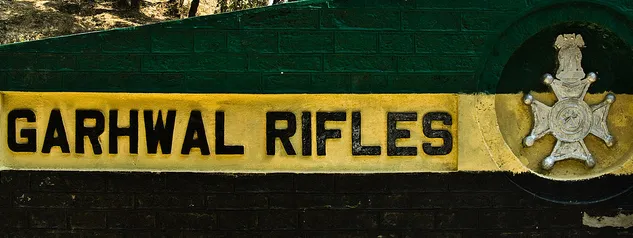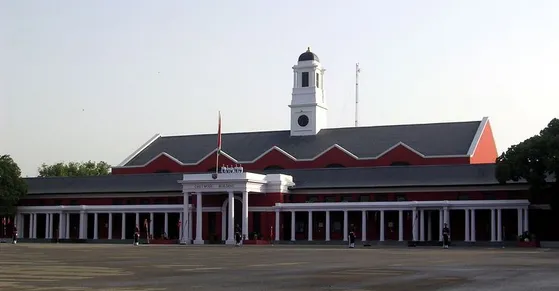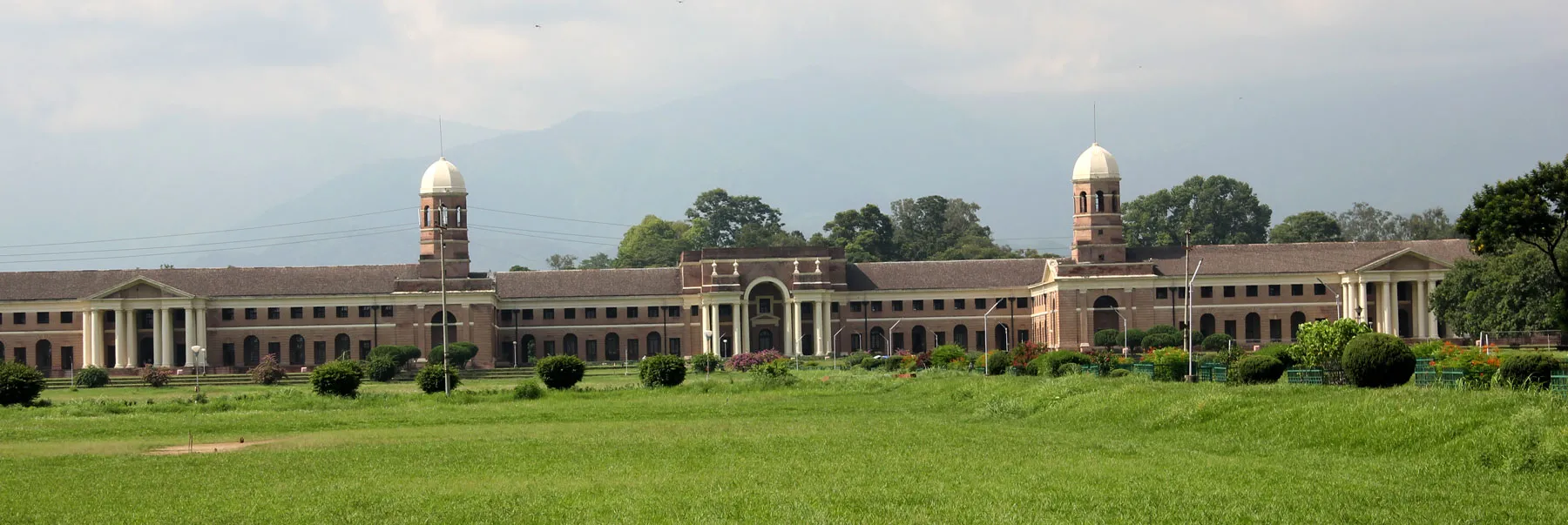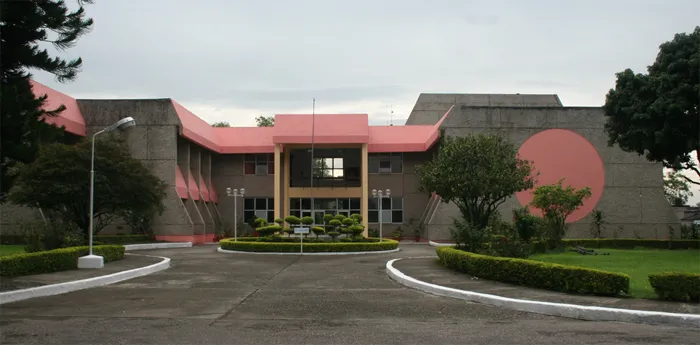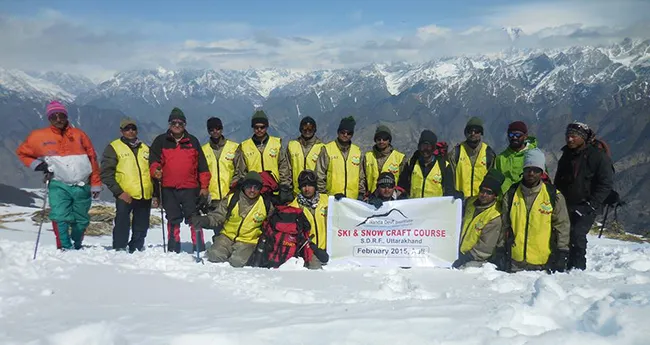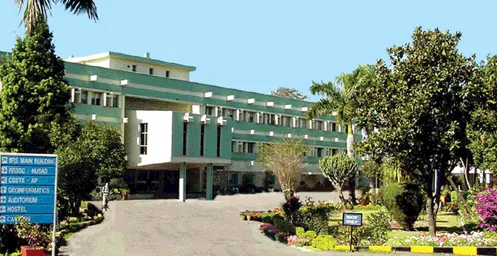Garhwal Rifles is a well known combat arm of the Indian Army. During the World Wars and the wars fought after Independence, the regiment not only showed exemplary courage but also maintained its unique identity. Mainly comprising the Garhwali soldiers, this regiment fought with great valour during the Kargil conflict. More than 25,000 soldiers of this regiment are at present engaged in the task of safeguarding the motherland.
Soldiers recruited into the Garhwal Rifles are from the Garhwal Hills, one of the most beautiful areas of the Himalayas and are known for their hardiness, simplicity and upright manner. Garhwal consists almost entirely of rugged mountain ranges running in all directions, and separated by narrow valleys which in some cases become deep gorges or ravines. The only level portion of the district is a narrow strip of waterless forest between the southern slopes of the hills and the fertile plains of Rohilkhand.
Lansdowne, at a height of 5800 ft above sea level, is the recruitment centre of the Garhwal Battalion. On October 1, 1921 the regimental centre celebrated its first founder's day. Now October 1 is celebrated as the raising day of the battalion. After Independence, the name of the centre was changed to Garhwal Rifles Regimental Centre. The rigorous drills during the training helps to infuse a sense of discipline in every recruit.
Special emphasis is laid on physical fitness, mental toughness and weapon handling. After successful completion of 34-week training, a Garhwali youth is turned into a soldier. The soldier is then trained for two more weeks in counter-insurgency operations.The regimental centre is considered the hub of training for the regiment. About 2500 recruits are trained here as soldiers every year. Earlier, the recruitments were held only at Lansdowne but now the recruitments take place at other places in the region as well. The centre has trained more then 60 thousand soldiers since Independence. At present, over 25 thousand soldiers are serving in different battalions of the Garhwal Rifles.
Lansdowne is the most notable, albeit small, hill station in the north Indian state of Uttaranchal. It is situated 45 km from Kotdwar en route Kotdwar-Pauri road in the Pauri Garhwal district. The famous Garhwal Rifles of the Indian Army has its command office here. They have maintained the old-world charm of the 19th century and the place is still an ideal getaway. It was founded by Lord Lansdowne in 1887 AD thus being named after him.Prior to 1887, there was no separate battalion of the Garhwali soldiers. They used to be recruited in the Gorkha battalion, Bengal Infantry and Punjab Frontier. Impressed by their honesty, courage and dedication, the British government decided to form a separate battalion for Garhwali soldiers.
The Garhwal Rifles was raised in 1887 to give the Garhwali Hillmen their own regiment. This was propagated by Field Marshal Sir FS Roberts VC, who realised that many Garhwalis had served in Gurkha regiments, and a large proportion of the early awards to Gurkha regiments were actually won by Garhwalis.On May 5, 1887 the first battalion was constituted under the command of Lt Col EP Mainwaring at Almora. On November 4, same year, this battalion reached Kalundanda in Garhwal.
In 1890, Kalundanda was renamed as Lansdowne after the then Viceroy of India. In the First World War, the Garhwal Rifles had one of the finest fighting records of any regiment in the Indian army. During the first World War, Nk Darban Singh and Rfn Gabbar Singh were awarded Victoria Cross. As a result of their outstanding bravery in France and Flanders, the Garhwal Rifles was the only Indian Infantry regiment given the title of Royal [The Fifth Royal Gurkhas also earned such a title]. During the Kotkai war in 1920, Lt WD Kenny of the Garhwal Regiment won the third Victoria Cross.The regiment fell into disfavor with the British because a detachment of Garhwali troops employed at Peshawar refused to open fire on unarmed civilians. In April 1930 at Peshawar, a part of a battalion of The Royal Garhwal Rifles mutinied and did not open fire against nationalist satyagrahis who were were protesting for the unlawful arrest of Khan Abdul Ghaffar Khan. The soldiers of the 2/18 Garhwal Rifles under the leadership of Chandra Singh Garhwali refused to fire upon the non-violent Pathan demonstrators, in spite of the communal instigation by their British officers. A total of 67 soldiers and others were punished, some receiving life imprisonment. A court martial found 17 Garhwali troops guilty and these were sentenced to various terms of transportation for life and lesser forms of imprisonment. This incident galvanised the entire freedom movement.While 721 soldiers of the regiment laid down their lives during the first World War, 349 soldiers made the supreme sacrifice during the second World War.After the formation of India in 1947 and the subsequent merger of the various states in India at the time, the Garhwal Rifles was merged in with the Indian Army.
Soldiers from this unit were among the first to receive the Victoria Cross - the highest decoration for a soldier in the British Army.So far the regiment has won 30 battle honours of which five were awarded in the post-Independence period. The regiment has participated in all the wars fought after Independence. The regiment has won one Ashok Chakra, four Mahavir Chakra, 13 Kirti Chakra, and 52 Vir Chakra for exceptional gallantry. In the operation Blue Star, Nk Bhavani Datt Joshi sacrificed his life while fighting the terrorists in Amritsar and was awarded Ashok Chakra. While Lt Col Kaman Singh was awarded Mahavir Chakra during the Indo-Pak war in 1948. Lt Col BM Bhattacharya and Rfn Jaswant Singh (posthumously) were awarded Mahavir Chakra after the Indo-China war of 1962. Capt Chandranarayan Singh was posthumously awarded Mahavir Chakra in the 1965 war.The Garhwal Rifles' played a significant role in the India-China War of 1962. The sacrifice along the frontier of Garhwali lives was enormous, as the Indian Army was ill-prepared for the rapidly advancing Chinese. Badly equipped for high altitude combat, short on supplies, and reconnaissance of the enemy, the Indian troops struggled valiantly onward, despite fighting a loosing war to both the invaders and frostbite. Indeed, one battalion of the Garhwal Rifles was captured, and many widows were made of the short, but bloody engagement
.Established as a single class regiment, the Garhwal Rifles remained so till 1984. Following a national policy, the 18th Garhwal Joint Battalion was constituted in 1985 along with the merger of companies of Jat, Dogra and Maratha regiments.The Garhwal Rifles had the proud privilege of playing a decisive role in dislodging Pakistani forces and recapturing Tiger Hill during the Kargil conflict. The Chief of Army Staff made a special instant award of "Unit Citation" to 18th Battalion, The Garhwal Rifles for their meritorious and gallant performance during the battles of Point 5140 on night 19/20 June and Point 4700 on night 27/28 June 1999, in Dras Sector.
The unit performed with distinction during Operation "VIJAY" and displayed exemplary valour and grit in the face of the enemy.The overall performance of 18th Battalion, The Garhwal Rifles [along with 13th Battalion, The Jammu and Kashmir Rifles] was exceptional and marked with exemplary valour and grit in the face of the enemy. The brave troops of a battalion of The Garhwal Rifles have captured three more positions North of Point 4927, viz, BumpI, II and III on night 08/09 July 1999. 18th Battalion, The Garhwal Rifles also acquitted itself with distinction in the battles of Point 5140 on night 19/20 June and Point 4700 on night 27/28 June 1999. The peak had been held by approximately 30 Pakistan soldiers along with some militants as a composite task force.
While the enemy suffered heavy casualties, 11 other ranks from the Garhwal Rifles were also killed. Capt. Sumit Roy was lost in heavy artillery exchange with the enemy.With so many families in the hills of Garhwal and Kumaon who have sons (and daughters) in the military, the conflict in Kashmir has taken a heavy toll. The Garhwal Rifles, as well as other Himalayan regiments (the Gurkha Rifles, Ladakh Scouts, Naga Regiments, and Jammu and Kashmir Infantry) were all entrusted with operations in Kargil in 1999. They joined their Sikh, Rajasthani, Mahar, and Bihari brothers as a multicultural and multi-faith force on the frontlines, suffering the brunt of casualities in defense of the state.The 18th Garhwal Joint Battalion was converted into a pure Garhwali battalion in December 1999.A special team of the Indian Army successfully removed 800 kg of environmentally hazardous garbage from the Nanda Devi Biosphere Reserve, a renowned world heritage site closed for visitors since 1982.The 40-member team of the Garhwal Rifles Regiment successfully scaled the India's second highest peak. Nanda Devi, and collected the non-biodegradable garbage left behind by previous expeditions in the 2000-sq kin bio-reserve.
The team scaled the 7,817-meter peak in September 2001 and collected the garbage through the expedition. The peak, even though isn't one of the highest 20 peaks in the world, at one point in time, enjoyed the singular status of being the highest mountain in the British empire - the reason being the Mount Everest lay in Nepal and K2 lay in the princely state of Kashmir.The 12th Reunion of the Garhwal Rifles was organized at its Regimental Centre in Lansdowne in June 2004. The highlight of the two-day celebrations was the special sainik sammelan presided over by Maj Gen MC Bhandari, the Colonel of Garhwal Rifles and Garhwal Scouts.
Addressing the sammelan, Maj Gen Bhandari recalled the gallant deeds of the Garhwali soldiers and said that the Garhwal Rifles has added a golden chapter in the annals of the Army history. Maj Gen Bhandari, on the occasion, released a commemorative First Day cover designed by Army Postal Service (APS) in the presence of Col M Eleesha, Director, APS, Central Command.An attestation parade was also held as part of the reunion celebrations in which 266 recruits were inducted as full-fledged soldiers. Maj Gen Bhandari, who administered the oath, also presented medals to the distinguished recruits of the course. Rfn Rajiv Singh was adjudged the best recruit and received gold medal. Rfn Ashish Rawat was declared best in drill, Rfn Bhagwan Singh in PT and Rfn Sandeep Singh in firing. After the parade, the Colonel of the Regiment felicitated 22 Veer Naris and next-of-kin of martyrs.
Maj Gen Bhandari, retired senior officers and the Subedar Major of the Regimental Center laid wreaths in homage to those who laid down their lives in the battlefield and brought glory to their regiment in a solemn ceremony organised at the Regimental War Memorial.About 300 officers and jawans, both serving and retired, from across the country participated in the celebrations. The veteral soldiers who attended the celebrations included the 92-year-old Lt Col IS Thapa and 80-year-old Maj PM Rex who served the Royal Garhwal Rifles from 1942 to 1948 and had come along with his wife from England. Lt Gen RS Gaur, who retired as a Quarter Master General, Army Headquarters also participated in celebrations. They cherished old memories on this occasion.
A badakhana and a variety entertainment programme were other highlights of the celebrations. A number of adventurous events organised to mark the occasion included para-drop and sky-diving demonstration by 50 (Independent) Para Brigade, motorcycle display by a 36-member team of the Corps of Military Police which came from Bangalore dogs' display by RVC Centre, Meerut.
